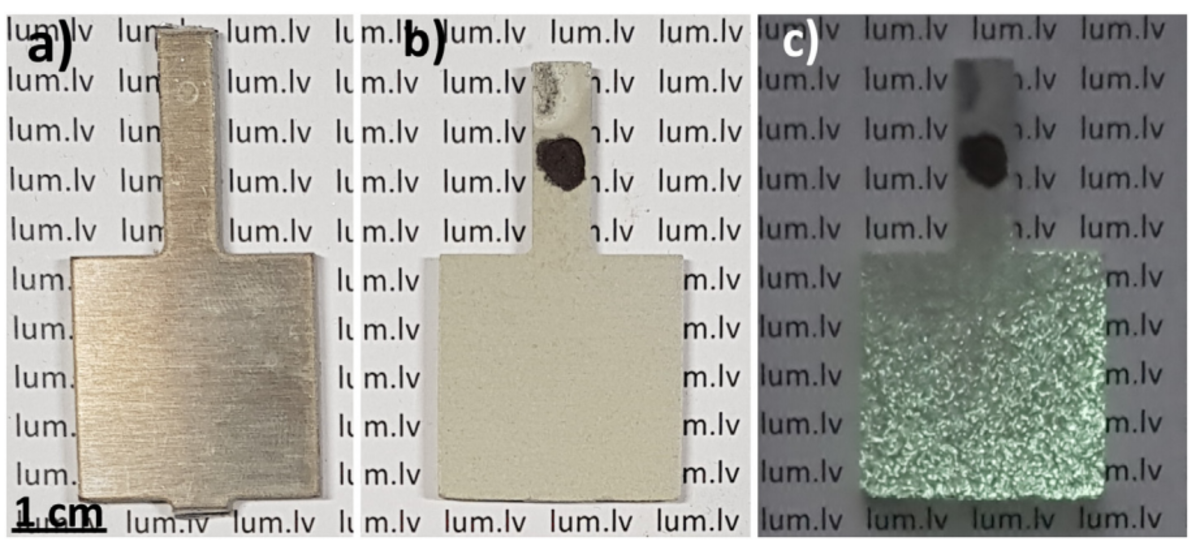
Phosphorescent strontium aluminate materials that accumulate the solar energy return it in the dark are known already since the mid-1990s, but the method by which these materials are produced is not environmentally friendly. "These materials are synthesized in solid-state reactions, high temperatures, furnaces and reducing atmosphere. This process is energy-inefficient, since it requires heating up to 1400 degrees for several hours and subsequent cooling," explains Krišjānis Šmits, Head of Laboratory of Solid State Radiation Physics.
Researchers at the Institute of Solid State Physics have created a new, much more effective and environmentally friendly method for obtaining materials with long lasting phosphorescence. To date, this method has not been used anywhere else in the world.
“We achieve the coating of the same materials directly onto the metal surface by oxidizing the metal in the plasma electrolytic oxidation process, where the electrolyte has a special composition. Thus, we obtain coatings with long-lasting phosphorescence. This can be done in a much shorter time, there is no need for extended heating, instead, the reducing atmosphere is provided by the electrolyte composition,” emphasizes K. Šmits
The UL researchers achieve formation of the material during the electrical discharges through the coating, according to slightly different principles of synthesis, but the result is similar to that achieved by the solid-state reaction method. The coating of this type has an afterglow from a few hours up to 24 hours, and could be used for emergency signs to light the exits in dark corridors, evacuation staircases, as well as road signs.
UL Optical Materials Laboratory is the world leader in the field of optical applications of such materials, and other laboratories in the world are already interested in collaboration.
The research has been implemented in the framework of ERDF project No. 1.1.1.1/16/A/182 "Phosphorescent coatings prepared by plasma electrolytic oxidation (2017-2019)".

 Akadēmiskais centrs
Akadēmiskais centrs